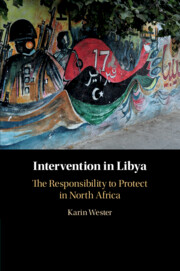Book contents
- Intervention in Libya
- Intervention in Libya
- Copyright page
- Dedication
- Epigraph
- Contents
- Preface
- Maps
- Introduction
- 1 The Origin of the Responsibility to Protect
- 2 Authority Based on Protection in a Historical Context
- 3 Libya and the Era of Qadhafi’s Rule
- 4 The Libyan Uprising and the International Response, February 15–26, 2011
- 5 The Libyan Uprising and the International Response, February 26–March 17, 2011
- 6 Operation Odyssey Dawn
- 7 Operation Unified Protector, NATO, and the UN
- 8 A Divided International Community Confronts a Divided Libya
- 9 Lessons to Be Learned
- Epilogue
- Select Bibliography
- Index
2 - Authority Based on Protection in a Historical Context
Published online by Cambridge University Press: 28 February 2020
- Intervention in Libya
- Intervention in Libya
- Copyright page
- Dedication
- Epigraph
- Contents
- Preface
- Maps
- Introduction
- 1 The Origin of the Responsibility to Protect
- 2 Authority Based on Protection in a Historical Context
- 3 Libya and the Era of Qadhafi’s Rule
- 4 The Libyan Uprising and the International Response, February 15–26, 2011
- 5 The Libyan Uprising and the International Response, February 26–March 17, 2011
- 6 Operation Odyssey Dawn
- 7 Operation Unified Protector, NATO, and the UN
- 8 A Divided International Community Confronts a Divided Libya
- 9 Lessons to Be Learned
- Epilogue
- Select Bibliography
- Index
Summary
The second chapter explores the main idea contained in the responsibility to protect, namely that national and international authority can be based on a capacity to provide protection. This core idea is subjected to a historical analysis, which shows that the responsibility to protect emanates from a long process evolving in the Western world in the course of several centuries. In this period, appeals to protection were regularly invoked in order to take international action and justify authority. Over time, international action for protective ends has been marked by recurrent patterns as well as normative changes – which both set the stage for the emergence of the responsibility to protect at the beginning of the twenty-first century. The chapter concludes by arguing that the responsibility to protect holds the promise to avert mass atrocities, but that the potential of the principle is compromised by a number of problematic aspects. Most importantly, a number of crucial questions regarding the legitimacy of international authority and the relationship between international actors and local actors remain essentially unresolved by the principle as currently defined.
Keywords
- Type
- Chapter
- Information
- Intervention in LibyaThe Responsibility to Protect in North Africa, pp. 24 - 60Publisher: Cambridge University PressPrint publication year: 2020



